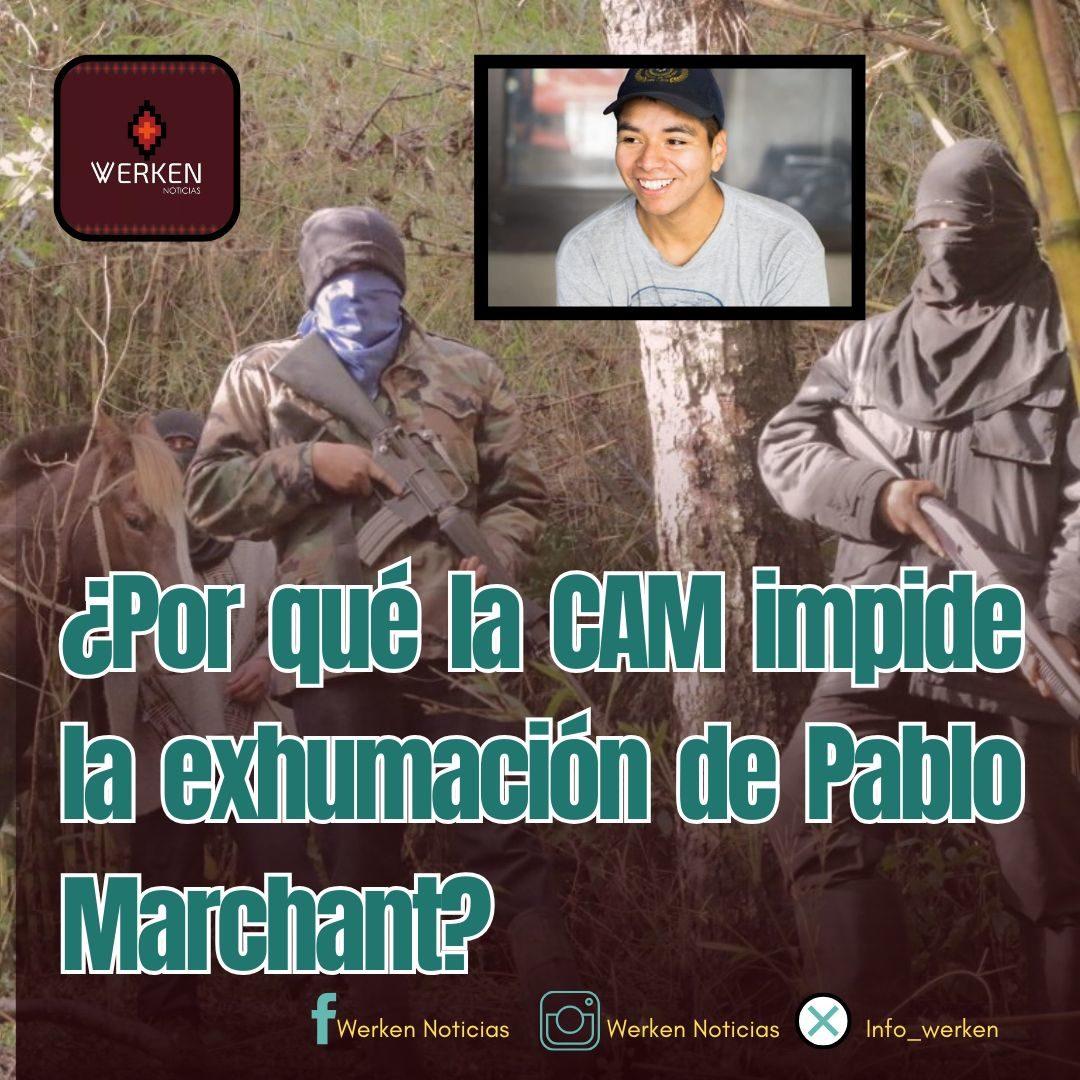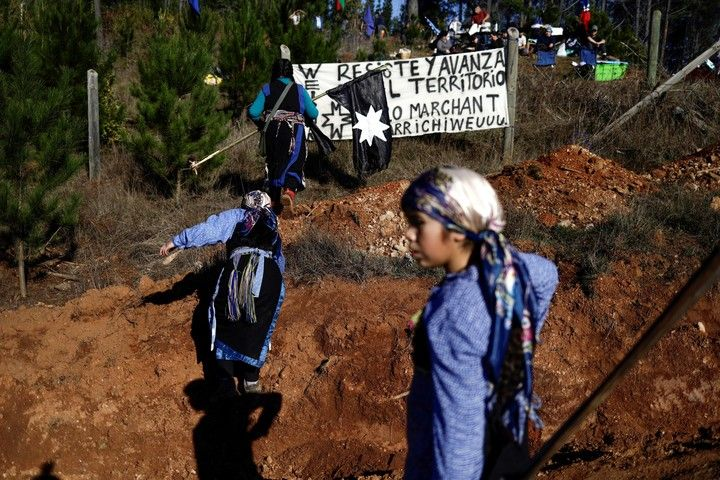
Werken Noticias / Resumen Latinoamericano, March 26, 2025
The recent attempt to exhume the body of Pablo Marchant, frustrated by the resistance of the Lof Pidenko, has revived the conflict between the State and the Coordinadora Arauco Malleco (CAM). But why is the CAM so strongly opposed to this procedure?
A weichafe buried according to Mapuche tradition
For the CAM and the Lof Pidenko, the refusal to exhume is not only a political issue, but also a spiritual and cultural one. Pablo Marchant, known as “Toñito” within the organization, was buried in an eltun, a Mapuche cemetery where his ancestors and historical leaders rest. From their worldview, removing his body would be a serious transgression, since the weichafe (warrior) chose to remain with the pu lonko in their eternal rest.
In interviews prior to his conviction, Héctor Llaitul, leader of the CAM, had already expressed his rejection of any attempt at exhumation, pointing out that “extracting Toñito’s body and leaving it in a common cemetery is a blow to the heart of our cause.” The organization considers this act an affront to their struggle and an attempt by the state to weaken its territorial control in the recovered areas.
A political and territorial struggle
Beyond the spiritual aspect, the CAM sees this procedure as part of a strategy by the State to weaken its presence in the region. The organization maintains that the exhumation does not respond to a real judicial interest, but to an “intelligence operation” to discredit their struggle and justify new incursions into disputed territories.
Llaitul has been categorical in his rejection of what he considers political persecution: “The conditions are created for a new incursion-occupation of the recovered properties.” In this sense, the resistance to the exhumation is not only out of respect for the weichafe, but also a way to prevent the State from continuing to advance in what they consider a strategy of repression.
Distrust of the State and the Media
Another key point in the CAM’s position is its deep distrust of state institutions and the media. According to Llaitul, the legal proceedings against his organization are based on “lies and fabrications,” and the media play a role at the service of the powerful to justify the criminalization of the autonomist movement.
In this context, accepting the exhumation of Marchant would be, for the CAM, validating a system that they consider oppressive and contrary to their struggle. For this reason, they have decided to prevent it at all costs, even confronting the Prosecutor’s Office, the PDI and the Army.
The conflict is still open
With the exhumation frustrated, the tension in the area remains high. It is unclear whether the authorities will insist on the procedure or how the CAM will respond in the event of a new attempt. What is clear is that, for the organization, Pablo Marchant’s tomb is a symbol of resistance and dignity that they are not willing to give up.
—
Héctor Llaitul’s statements are excerpted from an interview given to the media outlet “Voces en Lucha” in 2024.
LOF PIDENCO RESISTS THE ATTEMPT TO ENTER THE TERRITORY BY PDI AND MILITARY WHO RESPOND WITH HIGH-CALIBER WEAPONS

Maximum tension in the Lof Pidenco. Community members report that PDI, backed by military personnel, try to enter the territory, encountering resistance from the community. According to initial reports, state forces have responded with the use of high-caliber weapons.
Unofficially, it is indicated that the operation seeks to exhume the body of weichafe Pablo Marchant, which would have intensified the reaction of the community. The community members denounce strong repression and uncertainty remains about the development of the events.
The situation is still developing and more information is expected in the coming hours. We will stay tuned for any updates.